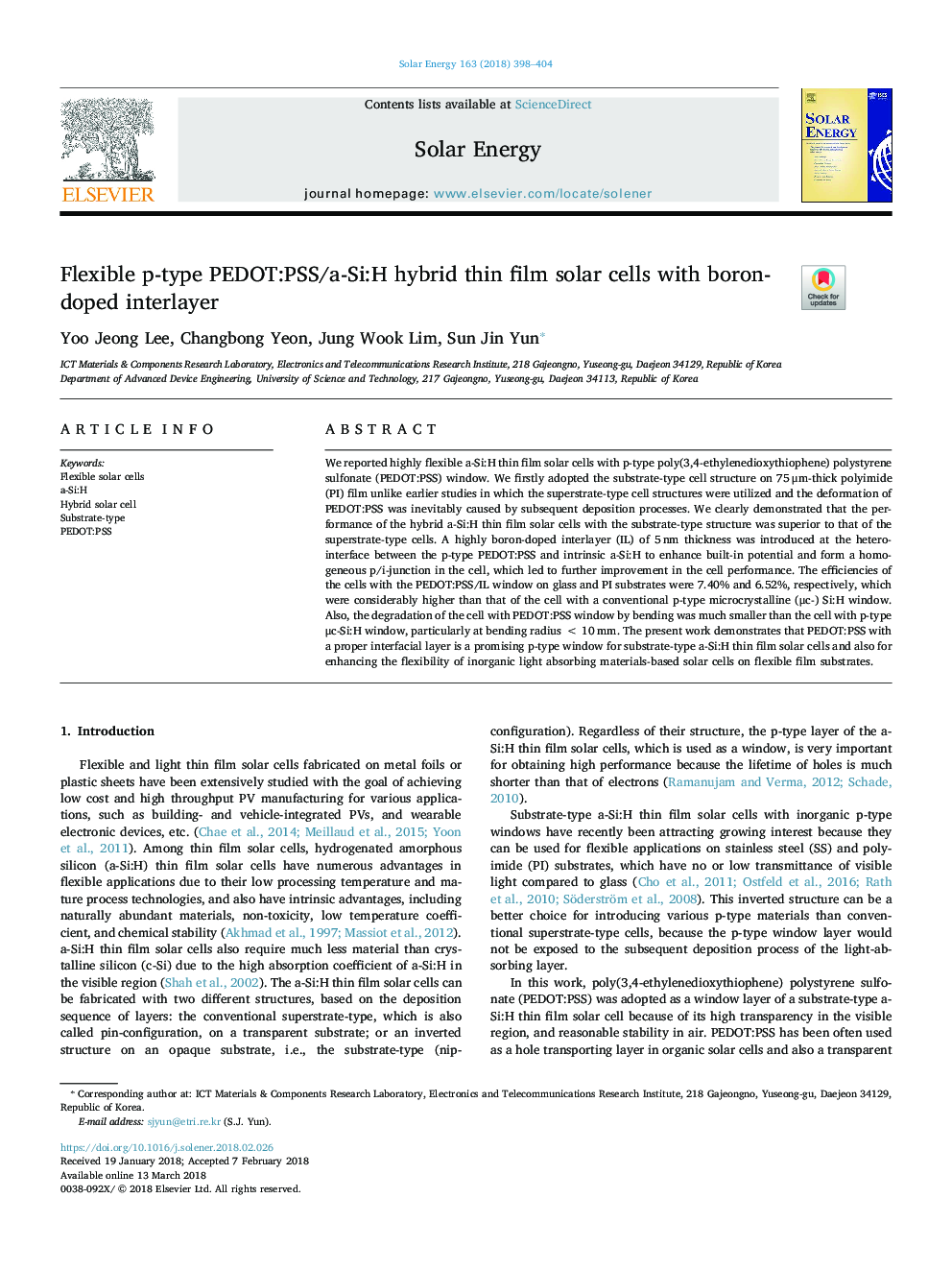| Article ID | Journal | Published Year | Pages | File Type |
|---|---|---|---|---|
| 7935559 | Solar Energy | 2018 | 7 Pages |
Abstract
We reported highly flexible a-Si:H thin film solar cells with p-type poly(3,4-ethylenedioxythiophene) polystyrene sulfonate (PEDOT:PSS) window. We firstly adopted the substrate-type cell structure on 75â¯Î¼m-thick polyimide (PI) film unlike earlier studies in which the superstrate-type cell structures were utilized and the deformation of PEDOT:PSS was inevitably caused by subsequent deposition processes. We clearly demonstrated that the performance of the hybrid a-Si:H thin film solar cells with the substrate-type structure was superior to that of the superstrate-type cells. A highly boron-doped interlayer (IL) of 5â¯nm thickness was introduced at the hetero-interface between the p-type PEDOT:PSS and intrinsic a-Si:H to enhance built-in potential and form a homogeneous p/i-junction in the cell, which led to further improvement in the cell performance. The efficiencies of the cells with the PEDOT:PSS/IL window on glass and PI substrates were 7.40% and 6.52%, respectively, which were considerably higher than that of the cell with a conventional p-type microcrystalline (μc-) Si:H window. Also, the degradation of the cell with PEDOT:PSS window by bending was much smaller than the cell with p-type μc-Si:H window, particularly at bending radiusâ¯<â¯10â¯mm. The present work demonstrates that PEDOT:PSS with a proper interfacial layer is a promising p-type window for substrate-type a-Si:H thin film solar cells and also for enhancing the flexibility of inorganic light absorbing materials-based solar cells on flexible film substrates.
Related Topics
Physical Sciences and Engineering
Energy
Renewable Energy, Sustainability and the Environment
Authors
Yoo Jeong Lee, Changbong Yeon, Jung Wook Lim, Sun Jin Yun,
